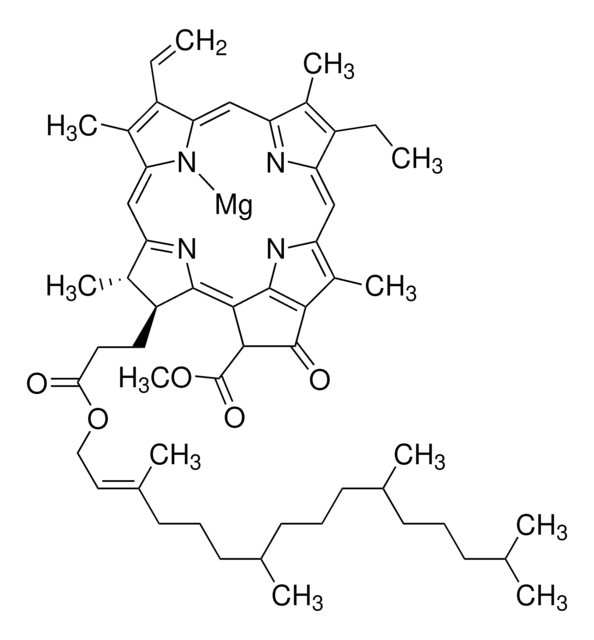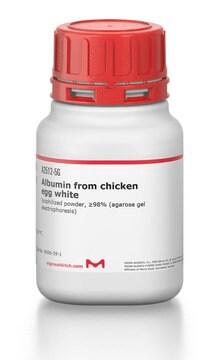A7472
Allophycocyanin
suspension, 4 mg/mL
Synonyme(s) :
APC
Se connecterpour consulter vos tarifs contractuels et ceux de votre entreprise/organisme
About This Item
Forme
suspension
Niveau de qualité
Poids mol.
104 kDa
Composition
Suspension in 60% saturated Ammonium Sulfate and 50 mM Potassium Phosphate, pH 7.0
Concentration
4 mg/mL
Couleur
blue
λmax
645-655 nm
Application(s)
diagnostic assay manufacturing
hematology
histology
Conditions d'expédition
wet ice
Température de stockage
2-8°C
Application
Phycobiliprotein exhibiting exceptional absorbance and fluorescence characteristics due to a lack of susceptibility to internal and external fluorescence quenching. Ideal for highly sensitive studies in flow cytometry and immunoassays.
Actions biochimiques/physiologiques
Allophycocyanin is a pigment which allows the energy trapped by phycobiliproteins to be transferred to the chloroplast lamellae.
Forme physique
4 mg/mL solution in 60% saturated ammonium sulfate and 50 mM potassium phosphate
Code de la classe de stockage
11 - Combustible Solids
Classe de danger pour l'eau (WGK)
WGK 3
Point d'éclair (°F)
Not applicable
Point d'éclair (°C)
Not applicable
Choose from one of the most recent versions:
Déjà en possession de ce produit ?
Retrouvez la documentation relative aux produits que vous avez récemment achetés dans la Bibliothèque de documents.
Les clients ont également consulté
Energy transfer in phycobilisomes from phycoerythrin to allophycocyanin.
Gantt E and Lipschultz CA
Biochimica et Biophysica Acta, 292, 858-861 (1973)
Margit Kaldmäe et al.
Protein science : a publication of the Protein Society, 28(6), 1024-1030 (2019-03-31)
Biotechnological applications of protein complexes require detailed information about their structure and composition, which can be challenging to obtain for proteins from natural sources. Prominent examples are the ring-shaped phycoerythrin (PE) and phycocyanin (PC) complexes isolated from the light-harvesting antennae
Erica D'Aguanno et al.
Life (Basel, Switzerland), 5(1), 969-996 (2015-03-21)
How did primitive living cells originate? The formation of early cells, which were probably solute-filled vesicles capable of performing a rudimentary metabolism (and possibly self-reproduction), is still one of the big unsolved questions in origin of life. We have recently
Notre équipe de scientifiques dispose d'une expérience dans tous les secteurs de la recherche, notamment en sciences de la vie, science des matériaux, synthèse chimique, chromatographie, analyse et dans de nombreux autres domaines..
Contacter notre Service technique

